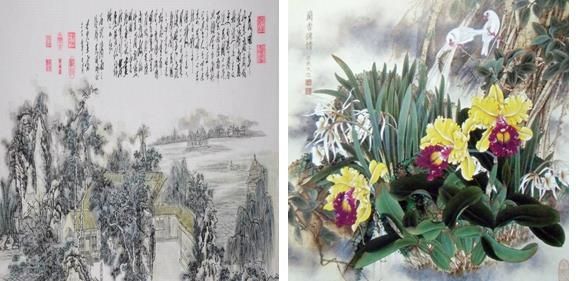unique qualities
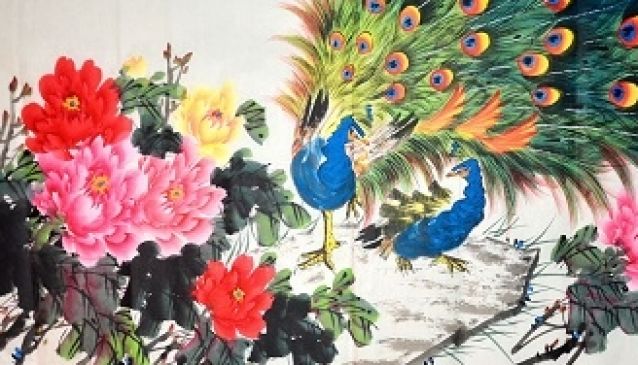
As the art of Chinese calligraphy, or shufa, is boasting as long a history as that of China itself. It is one of the highest forms of Chinese art, serving the purpose of conveying thoughts while also showcasing abstract beauty of lines. Calligraphy (shū fǎ 书法) has traditionally been regarded as China's highest form of visual art - to the point that a person's character was judged by the elegance of their handwriting! The basic tools of calligraphy - brush and ink - are also the tools of Chinese painting, with line work and tone the all-important components.
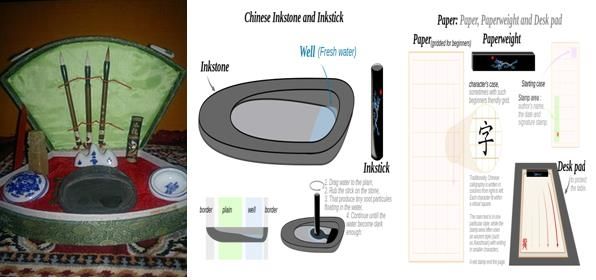
The story of the development of Chinese characters is not a very simple and coherent one. Different types of characters and styles were accepted at different places, under different rules and at different times. The intriguing thing is that some masterpieces that introduced a new revolutionary style were so admired that they were established as the new standard and form to be copied and studied by later generations. In general Chinese calligraphy can be divided into five major styles: Zhuan Shu (篆书) today mostly confined to seal carving, Li Shu (隶书), the traditional official style (mainly dominant during the Han Dynasty 206 B.C.-220 A.D), Kai Shu (楷书), the most common form for printing which is also considered to be the standard form of writing Chinese, Xing Shu (行书), the most commonly used form of hand writing also known as 'running style' and finally Cao Shu (草书), the Chinese cursive style, mostly used by calligraphers for highly abstract works but also seen in everyday use.
The four basic skills and disciplines of the Chinese literati are painting (huà 画), stringed musical instruments (qín 琴) and board games (qí 棋). Chinese traditional painting is highly regarded throughout the world for its theory, expression, and techniques.
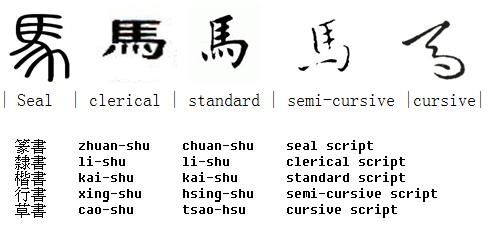
According to their means of expression, Chinese paintings can be divided into two categories: Xieyi School is marked by exaggerated forms and freehand brush work and Gongbi School is characterized by close attention to detail and fine brush work.
Xieyi, however, is the fundamental approach to Chinese painting. It constitutes an aesthetic theory, which above all, emphasizes the sentiments. Gu Kaizhi, a famous artist of the Jin Dynasty (c. 345-406), was the first to put forward the theory of "making the form show the spirit". In his opinion, a painting should serve as a means to convey not only the appearance of an object, but to also express how the artist looks at that object.
Different from Western paintings, a Chinese painting is not restricted by the focal point in its perspective. The artist may paint all the scenes along the Yangtse River on a piece of paper or silk that is long and narrow. It can be said that the adoption of shifting perspective is one of the characteristics of Chinese painting. Why do the Chinese artists emphasize the shifting perspective? They want to break away from the restrictions of time and space in order to include, in their pictures, things that are both near and far. Also, the artists find that in life, people view their surroundings from a mobile focal point. As one walks along a river or in a garden, one sees everything on the way. The shifting perspective enables the artist to express freely what he wants.
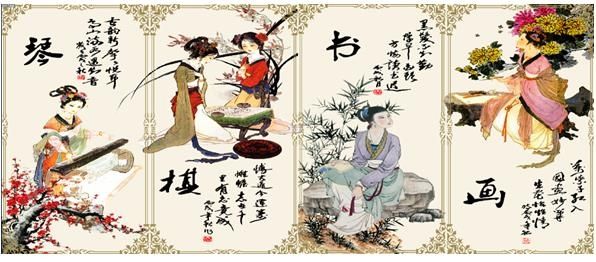
Chinese calligraphy and Chinese painting are closely related because lines are used in both. Chinese people have turned simple lines into a highly-developed form of art. Lines are used not only to draw contours but also to express the artist's concepts and feelings. A variety of lines are used for different subjects and different purposes. They may be straight or curved, hard or soft, thick or thin, pale or dark, and the ink may be dry or running. The use of lines and strokes is one of the elements that give Chinese painting its unique qualities.
